Donna Tartt in Harper’s Magazine:
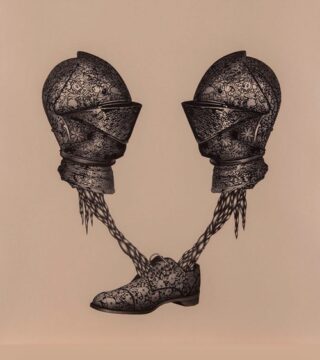 Toward the end of the nineteenth century, the painter James McNeill Whistler shouted out fiercely into posterity, over the heads of the art-world philistines of his day, and our own:
Toward the end of the nineteenth century, the painter James McNeill Whistler shouted out fiercely into posterity, over the heads of the art-world philistines of his day, and our own:
Listen! There never was an artistic period. There never was an Art-loving nation.
This hoarse cry from the Belle Époque is as bracing as it ever was, especially here in our own burned-out landscape where Art as Whistler defined it—Art with a capital A—is all too often viewed as an antiquated construction ensconced behind velvet ropes, not very relevant except as a standing resource to be boiled down to blunt cultural agendas, picked apart by theory, aped by predictive formulas, pillaged and parodied for commercials and computer software, if not ignored altogether in the glitz of technological stimulus.
Even in 1794, Schiller was asking: How is the artist to protect himself against the corruption of the age that besets him on all sides? Too much chasing after money and success, too much pandering to the popular taste, too much weight on ideology or politics or dogma of any stripe, and God, in the cogent phrase of Quincy Jones, walks out of the room. But in our own sped-up nightmare of screens and algorithms, accelerating more wildly every day, art—and artists—are battered with all the same old discouraging assaults along with new ones that Whistler never dreamed of.
More here.

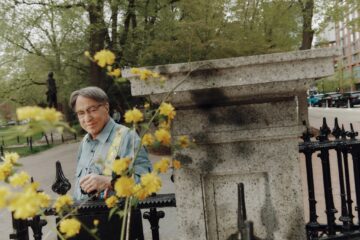 Sitting near a window inside Boston’s Four Seasons Hotel, overlooking a duck pond in the city’s Public Garden, Ray Kurzweil held up a sheet of paper showing the steady growth in the amount of raw computer power that a dollar could buy over the last 85 years. A neon-green line rose steadily across the page, climbing like fireworks in the night sky. That diagonal line, he said, showed why humanity was just 20 years away from
Sitting near a window inside Boston’s Four Seasons Hotel, overlooking a duck pond in the city’s Public Garden, Ray Kurzweil held up a sheet of paper showing the steady growth in the amount of raw computer power that a dollar could buy over the last 85 years. A neon-green line rose steadily across the page, climbing like fireworks in the night sky. That diagonal line, he said, showed why humanity was just 20 years away from 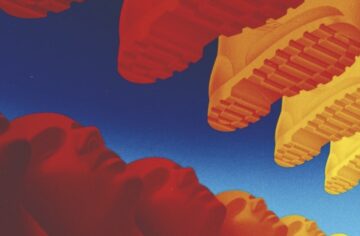 There is Orwell the human being. There is Orwell the novelist. There is Orwell the intellectual, the critic, the journalist, the essayist, the radical. But lately, George Orwell—who was born Eric Arthur Blair and who never fully abandoned his original name—has increasingly come to be regarded as a modern oracle, a gifted soothsayer who predicted with terrifying accuracy how fragile and fallible our political systems were, how close the shadow of authoritarianism. His body of work has become a compass to help us navigate our way in times of democratic recession and backsliding, as is the case worldwide. Among all his books, the one that has left the deepest impact on generations of readers across borders is, no doubt, Nineteen Eighty-Four.
There is Orwell the human being. There is Orwell the novelist. There is Orwell the intellectual, the critic, the journalist, the essayist, the radical. But lately, George Orwell—who was born Eric Arthur Blair and who never fully abandoned his original name—has increasingly come to be regarded as a modern oracle, a gifted soothsayer who predicted with terrifying accuracy how fragile and fallible our political systems were, how close the shadow of authoritarianism. His body of work has become a compass to help us navigate our way in times of democratic recession and backsliding, as is the case worldwide. Among all his books, the one that has left the deepest impact on generations of readers across borders is, no doubt, Nineteen Eighty-Four.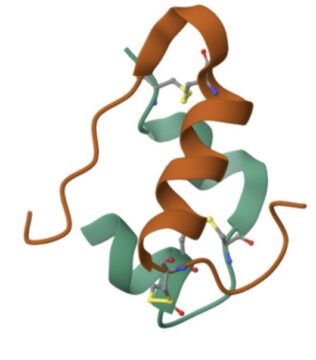 Insulin is an abomination. Sure, injecting it saves the lives of millions of diabetics, but that injected protein is unnatural and abhorrent, the product of a genetically modified organism! And it’s not even necessary: Rather than playing God to coax single-celled creatures never designed for insulin production to make the stuff, we could be harvesting it naturally, like we used to just a few decades ago. After all, one need only slaughter about 20,000 pigs or cows to provide a pound of insulin!
Insulin is an abomination. Sure, injecting it saves the lives of millions of diabetics, but that injected protein is unnatural and abhorrent, the product of a genetically modified organism! And it’s not even necessary: Rather than playing God to coax single-celled creatures never designed for insulin production to make the stuff, we could be harvesting it naturally, like we used to just a few decades ago. After all, one need only slaughter about 20,000 pigs or cows to provide a pound of insulin! At the height of the COVID-19 pandemic, the U.S. military launched a secret campaign to counter what it perceived as China’s growing influence in the Philippines, a nation hit especially hard by the deadly virus.
At the height of the COVID-19 pandemic, the U.S. military launched a secret campaign to counter what it perceived as China’s growing influence in the Philippines, a nation hit especially hard by the deadly virus. Despite its growing popularity among Anglophone readers, the crónica—a unique form of literary reportage that blurs the lines of fact and fiction—remains a quintessentially Latin American genre. In English, scant studies on the form exist beyond 2002’s
Despite its growing popularity among Anglophone readers, the crónica—a unique form of literary reportage that blurs the lines of fact and fiction—remains a quintessentially Latin American genre. In English, scant studies on the form exist beyond 2002’s  LO. LEE. TA. This is the trip the tip of the tongue expects to take when reading a novel from the point of view of a man currently incarcerated following the rape of a teenage girl he’s groomed. And at the tender age of thirteen pages into Lucas Rijneveld’s My Heavenly Favorite, an attentive reader may indeed murmur “Lolita!” when the unnamed narrator, a former farm veterinarian from the Dutch countryside, refers to the titular “favorite,” also unnamed, as “the fire of my loins.” So far, so Lo.
LO. LEE. TA. This is the trip the tip of the tongue expects to take when reading a novel from the point of view of a man currently incarcerated following the rape of a teenage girl he’s groomed. And at the tender age of thirteen pages into Lucas Rijneveld’s My Heavenly Favorite, an attentive reader may indeed murmur “Lolita!” when the unnamed narrator, a former farm veterinarian from the Dutch countryside, refers to the titular “favorite,” also unnamed, as “the fire of my loins.” So far, so Lo. While the Fourth of July conjures up images of fireworks and parades, barbecues and bonfires, the United States has another Independence Day tradition: naturalizing new citizens. An estimated 11,000 people will celebrate the holiday this year by officially becoming American citizens, double the number from 2023.
While the Fourth of July conjures up images of fireworks and parades, barbecues and bonfires, the United States has another Independence Day tradition: naturalizing new citizens. An estimated 11,000 people will celebrate the holiday this year by officially becoming American citizens, double the number from 2023. 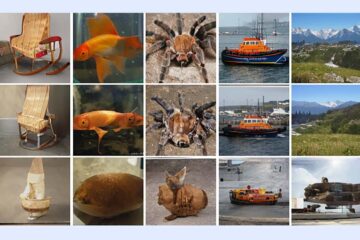 Artificial intelligence systems can now create remarkably accurate reconstructions of what someone is looking at based on recordings of their brain activity. These reconstructed images are greatly improved when the AI learns which parts of the brain to pay attention to. “As far as I know, these are the closest, most accurate reconstructions,” says
Artificial intelligence systems can now create remarkably accurate reconstructions of what someone is looking at based on recordings of their brain activity. These reconstructed images are greatly improved when the AI learns which parts of the brain to pay attention to. “As far as I know, these are the closest, most accurate reconstructions,” says 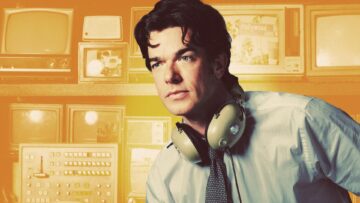 DESPITE ITS HOST’S supremely confident stage persona, John Mulaney Presents: Everybody’s in L.A. starts out self-conscious. In his opening monologue, Mulaney explains that he doesn’t really understand the point of the show and assures the audience that, with only six episodes streamed live and nightly on Netflix, it “will never hit its groove.” He’s right to worry. With everything from traditional call-in segments and monologues to chaotic guest cross talk to a robot-based running gag and semi-real, semi-staged portraits of Los Angeles, the show is a chaotic mix of disparate comedic modes that constantly dares itself not to work.
DESPITE ITS HOST’S supremely confident stage persona, John Mulaney Presents: Everybody’s in L.A. starts out self-conscious. In his opening monologue, Mulaney explains that he doesn’t really understand the point of the show and assures the audience that, with only six episodes streamed live and nightly on Netflix, it “will never hit its groove.” He’s right to worry. With everything from traditional call-in segments and monologues to chaotic guest cross talk to a robot-based running gag and semi-real, semi-staged portraits of Los Angeles, the show is a chaotic mix of disparate comedic modes that constantly dares itself not to work. Between 1945 and 1960, RAND operated as the world’s most productive research organization. Initially envisioned as a research arm of the Air Force, RAND made century-defining breakthroughs both in basic science and applied strategic analysis. Its members helped define U.S.
Between 1945 and 1960, RAND operated as the world’s most productive research organization. Initially envisioned as a research arm of the Air Force, RAND made century-defining breakthroughs both in basic science and applied strategic analysis. Its members helped define U.S.  J
J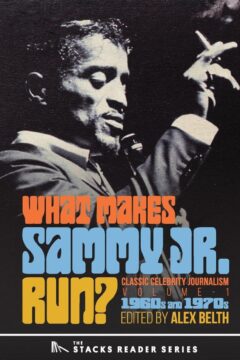 Editor Alex Belth has created an unusual literary anthology of some of the best celebrity magazine profiles from 1959 to 1979, what is generally regarded—at least by publishing old-timers—as the peak years of the genre, before the ferret-faced publicists cracked down on honesty and budgets ran dry. What Makes Sammy Jr. Run? Classic Celebrity Journalism Volume 1 (1960s and 1970s), published by the Sager Group this spring, puts 18 long-form stories about well-known actors, writers, and musicians into one place. The result is like a walk through a delightful museum of postwar America, with all its bright spots and faults.
Editor Alex Belth has created an unusual literary anthology of some of the best celebrity magazine profiles from 1959 to 1979, what is generally regarded—at least by publishing old-timers—as the peak years of the genre, before the ferret-faced publicists cracked down on honesty and budgets ran dry. What Makes Sammy Jr. Run? Classic Celebrity Journalism Volume 1 (1960s and 1970s), published by the Sager Group this spring, puts 18 long-form stories about well-known actors, writers, and musicians into one place. The result is like a walk through a delightful museum of postwar America, with all its bright spots and faults.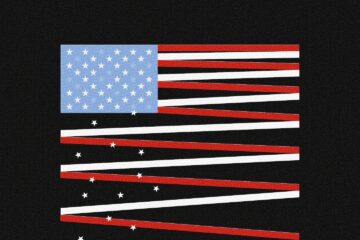 In the course of human events, America has come to agree on one thing: that any modern birthday celebration of itself will involve sizzling hunks of meat, Springsteen in the ears, smoke in the eyes, sulfur in the nostrils, rockets’ red glare.
In the course of human events, America has come to agree on one thing: that any modern birthday celebration of itself will involve sizzling hunks of meat, Springsteen in the ears, smoke in the eyes, sulfur in the nostrils, rockets’ red glare.